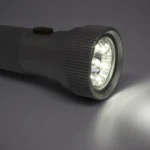
Tourette Syndrome (TS) is a neurodevelopmental disorder characterized by involuntary movements and vocalizations called tics. First documented in the 19th century, TS has since been the subject of extensive research and advocacy efforts. Despite its prevalence, misconceptions surrounding TS persist, underscoring the importance of accurate understanding and awareness. In this overview, we explore key facts about Tourette Syndrome, including its history, symptoms, prevalence, treatment options, and ongoing research, aiming to foster greater understanding and support for individuals living with this condition.
Early Description: The first documented case of Tourette Syndrome (TS) likely appears in a medical text from 1825 by French physician Jean-Marc Gaspard Itard. It detailed a woman with uncontrollable movements and shouts. This historical account offers insight into early recognition of TS symptoms, although the term “Tourette Syndrome” had not yet been coined. Itard’s description highlights the characteristic motor and vocal tics that are hallmarks of the condition, setting a precedent for future clinical observations.
Georges Gilles de la Tourette: The neurologist who named the condition, Dr. Georges Gilles de la Tourette, published his observations on multiple patients with tics in 1885. Dr. Tourette’s seminal work, “Study of a Nervous Affliction,” provided one of the earliest comprehensive accounts of the disorder. By identifying and categorizing the various tics experienced by his patients, Dr. Tourette laid the foundation for the modern understanding of Tourette Syndrome and its associated symptoms.
Prevalence: Tourette Syndrome affects about 1 in 100,000 people worldwide. However, milder cases might go undiagnosed, so the actual prevalence could be higher. This statistic underscores the relatively rare nature of TS compared to other neurological conditions. Yet, the possibility of underdiagnosis suggests that the true prevalence may be underestimated, highlighting the need for increased awareness and recognition within the medical community.
Age of Onset: Symptoms of TS typically appear between ages 5 and 11, with an average age of onset around 6 years old. The early onset of symptoms during childhood is a key characteristic of Tourette Syndrome. This developmental timeline coincides with significant neurobiological changes and social maturation, potentially influencing the emergence and progression of tics during this critical period of growth and development.
Gender Bias: Tourette Syndrome is diagnosed three to four times more frequently in males than females. However, this might be due to underdiagnosis in females who often exhibit less severe tics. The gender disparity in TS diagnosis raises important questions about potential differences in symptom presentation and diagnostic criteria between males and females. Further research is needed to elucidate these disparities and ensure equitable access to diagnosis and treatment for all individuals with Tourette Syndrome.
Types of Tics: There are two main categories of tics in TS: Motor Tics and Vocal Tics. Motor tics involve involuntary, sudden, and repetitive muscle movements such as blinking, head jerking, or limb twitching. Vocal tics encompass involuntary sounds or words, ranging from simple vocalizations like grunts or coughs to more complex utterances like words or phrases. Understanding the diverse manifestations of tics is crucial for accurate diagnosis and tailored treatment approaches in Tourette Syndrome.
Tic Severity: Tics in TS can range from mild and barely noticeable to severe and debilitating, impacting daily life. The severity of tics can vary widely among individuals with Tourette Syndrome and may fluctuate over time. Factors such as stress, fatigue, and environmental stimuli can influence tic severity, underscoring the complex and multifaceted nature of the condition.
Comorbidity: People with TS often have co-occurring conditions like ADHD, OCD, anxiety, or depression. The high prevalence of comorbidities in Tourette Syndrome highlights the significant impact of the condition on various aspects of physical and mental health. Addressing comorbid conditions alongside tics is essential for comprehensive management and improved quality of life for individuals with TS.
Cause Unknown: The exact cause of Tourette Syndrome remains unknown, but it’s believed to be a complex interplay of genetic and environmental factors. Despite decades of research, the precise etiology of TS remains elusive. Genetic predisposition, alterations in neurotransmitter systems, and environmental influences are among the factors implicated in the development of Tourette Syndrome, but further investigation is needed to unravel the underlying mechanisms.
Genetic Link: Studies suggest a genetic predisposition to TS, with a higher chance of developing it if a close relative has the condition. Familial clustering of Tourette Syndrome cases provides compelling evidence for a genetic component in its etiology. However, the inheritance pattern appears to be complex, involving multiple genes with varying degrees of influence. Identifying specific genetic markers associated with TS could provide valuable insights into its pathogenesis and facilitate the development of targeted interventions.
Brain Abnormalities: Neuroimaging studies have shown slight differences in brain structure and function in people with TS compared to those without. These findings suggest that Tourette Syndrome is associated with subtle alterations in brain morphology and neural circuitry, particularly in regions involved in motor control, inhibition, and sensory processing.
Dopamine Connection: Dopamine, a neurotransmitter involved in movement and reward, is thought to play a role in TS. Medications that influence dopamine levels are often used to manage tics. Dysregulation of dopamine signaling pathways is implicated in the pathophysiology of Tourette Syndrome, leading to aberrant motor control and tic expression. Dopaminergic medications, such as dopamine antagonists or dopamine reuptake inhibitors, target these neurotransmitter abnormalities to alleviate tic symptoms and improve functional outcomes.
Stress and Tics: Stress and anxiety can worsen tics in people with TS. Psychological stressors can exacerbate tic symptoms by increasing physiological arousal and disrupting neural circuits involved in tic suppression. Moreover, the anticipation of stressful situations can heighten premonitory urges, leading to an escalation of tic severity. Implementing stress management techniques, such as relaxation exercises and cognitive-behavioral strategies, is integral to mitigating the impact of stress on Tourette Syndrome symptoms.
Premonitory Urge: Many people with TS experience a premonitory urge before a tic, an uncomfortable sensation that is temporarily relieved by performing the tic. Premonitory urges are subjective sensations or impulses that precede the onset of tics in Tourette Syndrome. These sensory experiences vary in intensity and duration, often described as a mounting tension or itch-like sensation that compels individuals to engage in tic behaviors for momentary relief. Recognizing and addressing premonitory urges is central to the implementation of tic management strategies, such as habit reversal training.
Suppressing Tics: While possible to suppress tics for short periods, the urge to tic typically builds up and eventually needs to be released. Conscious suppression of tics can temporarily mitigate their expression, particularly in controlled environments or social settings. However, sustained suppression often leads to heightened premonitory urges and rebound increases in tic frequency or intensity. Balancing tic suppression with adaptive coping strategies is essential to prevent tic-related distress and functional impairment in Tourette Syndrome.
Swearing Less Common: The misconception that everyone with TS shouts swear words is untrue. Coprolalia, the uncontrollable uttering of socially inappropriate words, is a rare tic in TS. Contrary to popular stereotypes, coprolalia is not a defining feature of Tourette Syndrome and is present in only a minority of cases. Most individuals with TS experience a diverse range of motor and vocal tics, with only a small subset exhibiting coprolalic utterances. Dispelling misconceptions surrounding coprolalia is crucial for fostering accurate understanding and acceptance of Tourette Syndrome in society.
Famous Figures with TS: Several notable figures throughout history are believed to have had TS, including French composer Wolfgang Amadeus Mozart and American baseball player Jim Eisenreich. The historical accounts of individuals with Tourette Syndrome underscore the diverse talents and accomplishments of people living with the condition. By highlighting the achievements of individuals with TS across various domains, these historical figures challenge stigmatizing stereotypes and celebrate the resilience and creativity of the Tourette Syndrome community.
International Tourette Syndrome Awareness Day: May 15th is designated as International Tourette Syndrome Awareness Day to raise awareness and understanding of the condition. This annual observance serves as a global platform for advocacy, education, and community engagement surrounding Tourette Syndrome. Through public events, social media campaigns, and educational initiatives, International Tourette Syndrome Awareness Day aims to dispel misconceptions, promote acceptance, and support individuals and families affected by TS.
Coping Strategies: There are various coping strategies that can help people with TS manage their tics, including relaxation techniques, cognitive behavioral therapy (CBT), and habit reversal training. Coping strategies empower individuals with Tourette Syndrome to exert control over their symptoms and enhance their overall well-being. By integrating evidence-based interventions into daily life, individuals with TS can effectively navigate the challenges associated with tic disorders and optimize their quality of life.
Deep Brain Stimulation (DBS): In severe cases, DBS, a surgical procedure that implants electrodes in specific brain regions, can be used to regulate tic severity. Deep brain stimulation represents an advanced therapeutic option for individuals with Tourette Syndrome refractory to conventional treatments. By modulating abnormal neural activity within targeted brain circuits, DBS can attenuate tic symptoms and improve functional outcomes in select patients. Ongoing research continues to refine DBS techniques and optimize patient selection criteria to maximize the benefits of this intervention for Tourette Syndrome management.
No Cure, But Management: There is currently no cure for Tourette Syndrome, but medications and various therapies can effectively manage symptoms and improve quality of life. Despite the absence of a definitive cure, comprehensive treatment approaches can significantly alleviate tic-related distress and functional impairment in individuals with TS. Multimodal interventions, including pharmacotherapy, behavioral therapies, and psychosocial support, address the diverse needs of patients and promote holistic symptom management.
The Tourette Association: The Tourette Association (TIA) is a leading non-profit organization dedicated to research, education, and advocacy for Tourette Syndrome. The Tourette Association plays a pivotal role in advancing knowledge and awareness of TS through research funding, educational programs, and public policy initiatives. By fostering collaboration among scientists, healthcare professionals, and individuals affected by TS, the association strives to enhance clinical care, support, and resources for the Tourette Syndrome community.
Million Dollar Challenge: The Tourette Association offers a $1 million USD reward to any researcher who can definitively identify the cause of Tourette Syndrome. The Million Dollar Challenge underscores the urgent need for scientific breakthroughs in understanding the etiology and pathophysiology of TS. By incentivizing innovative research approaches, the challenge aims to accelerate progress toward elucidating the underlying mechanisms of Tourette Syndrome and developing targeted interventions for improved patient outcomes.
Increasing Awareness: Increased media portrayals of Tourette Syndrome, while not always accurate, contribute to raising public awareness and reducing stigma. Media representation plays a crucial role in shaping public perceptions and attitudes toward Tourette Syndrome. By depicting diverse experiences and challenges associated with TS, media platforms can foster empathy, acceptance, and support for individuals living with the condition. However, it is essential to ensure that media portrayals are informed by accurate information and sensitive to the experiences of the Tourette Syndrome community.
Looking to the Future: Ongoing research into the causes and treatments of Tourette Syndrome offers hope for improved management and potentially even a cure in the future. Despite the challenges posed by Tourette Syndrome, advancements in neuroscience, genetics, and therapeutic interventions hold promise for transformative breakthroughs in TS research and clinical care. By harnessing interdisciplinary collaborations and innovative technologies, researchers are poised to unlock new insights into the complexities of Tourette Syndrome and pave the way for more effective treatments and interventions.
FAQs about Tourette Syndrome:
- Is Tourette Syndrome always about swearing?
Tourette Syndrome (TS) is often portrayed in media as causing people to shout swear words uncontrollably. However, this is a misconception. While involuntary sounds or words are a common symptom of TS, uttering socially inappropriate words, called coprolalia, only affects about 10% of cases.
TS can manifest in a wider range of vocal tics, including simpler sounds like grunts, throat clearing, or coughs, or even words or phrases that aren’t offensive. Motor tics, involving involuntary movements like blinking, head jerking, or limb twitches, are also a hallmark feature of TS and can be present without any vocal tics.
- What causes Tourette Syndrome?
The exact cause of Tourette Syndrome remains unknown, but researchers believe it’s a complex interplay of genetic and environmental factors.
Genetics: Studies suggest a genetic predisposition to TS. If a close relative has the condition, you have a higher chance of developing it yourself.
Brain Abnormalities: Neuroimaging studies have shown slight differences in brain structure and function in people with TS compared to those without.
Dopamine Connection: Dopamine, a neurotransmitter involved in movement and reward, is thought to play a role in TS. Medications that influence dopamine levels are often used to manage tics.
While the exact cause remains elusive, ongoing research is working to unravel the mysteries behind TS.
- How is Tourette Syndrome diagnosed?
There’s no single test for diagnosing Tourette Syndrome. Doctors typically rely on a combination of factors:
Symptoms: Presence of both motor and/or vocal tics for at least a year, with symptoms typically starting before age 18.
Medical History: Ruling out other medical conditions that might cause similar symptoms.
Family History: Knowing if any close relatives have TS can be helpful.
A thorough evaluation by a healthcare professional experienced in TS is crucial for diagnosis.
- Is there a cure for Tourette Syndrome?
Currently, there is no cure for Tourette Syndrome. However, there are various treatment options available to manage symptoms and improve quality of life. These include:
Medications: Medications that influence dopamine levels can help reduce tic severity.
Therapy: Cognitive behavioral therapy (CBT) and habit reversal training can be effective in managing tics and coping strategies.
Deep Brain Stimulation (DBS): In severe cases, DBS, a surgical procedure, can be used to regulate tic severity.
The best treatment approach is individualized based on the specific needs and severity of each person’s TS.
- How can I support someone with Tourette Syndrome?
There are several ways to support someone with Tourette Syndrome:
Educate Yourself: Learn about TS to understand the challenges they face.
Be Patient and Understanding: Tics can be involuntary and frustrating for the person experiencing them.
Avoid Drawing Attention to Tics: Focusing on tics can make them worse. Treat the person with normalcy and respect.
Offer Support: Listen to them and offer support without judgment. Encourage them to seek professional help if needed.
Challenge Misconceptions: Help raise awareness about TS and dispel myths surrounding the condition.
By offering support and understanding, you can make a positive difference in the life of someone with Tourette Syndrome.









